Digitising
communication
About Tourlane
Tourlane is a travel startup focussed on co-creating all-inclusive trips for travellers that are highly personalised to individual needs.Project Challenge
Background
The traveller comes to the website and gives some basic information, and Tourlane begins building the customer a trip. The co-creation happens when one of the sales agents calls to discuss the trip details with the customer, and they can provide more information on what is important for them. Once the trip is in a good state, the sales agent sends the customer an itinerary, and they can confirm that they wish to buy the trip. The operations team then begins the process of booking the trip.
The Problem
A typical trip comprises five item types: accommodations, transfers, car rental, activities, and flights. The supply is highly custom and, therefore, can be complex. Sometimes when a sales agent starts booking a trip, some of the item types the customer has agreed to is no longer available. Currently Tourlane handles all communication with the customer manually via email and phone calls. This includes direct emails between customers and sales agents about any changes which also includes sending a new itinerary, CRM emails about the destination and points of interest, confirming the final itinerary and finalising payments and invoices. Given how manual all communication was, Tourlane wanted to move to a digital offering through a traveller dashboard.
The Approach
I set out the task of building the feature as follows:
- Research
- Defining the problem
- Ideation
- Prototyping & testing
- Setting OKR's and KPI's
01
Research
Objective
In order to gather insights about user needs and pain points, I conducted user interviews to identify the problems, goals and motivations of the sales agents and Tourlane customers.
Sales Agent Interviews
I interviewed three senior sales agents and two junior sales agents to get a comrehensive understanding of the problems they faced with the process of selling all-inclusive trips to customers. The following pain points were identified:
- Time-consuming and inefficient communication with customers via email and phone.
- Difficulty keeping track of inventory availability and changes, leading to errors and delays in the trip planning process.
- Providing information to customers who want travel tips and recommendations for their destination which is time-consuming.
- Dealing with frustrated or unhappy customers due to miscommunication or inventory availability issues.
- Frustration of waiting for customers to send important documents such as passports which delays the booking process and leads to inventory not being available anymore.
Customer Interviews
The core target market for Tourlane was 40 – 50 year old couples or families who are high income earners. On average a customer would pay around 7,500 Euros per trip and is much higher for family trips. I interviewed three customers (couples trip) who completed the booking process for the first time as well as two repeat customers (family trip) to get a comrehensive understanding of the problems they faced with the process of buying all-inclusive trip/s. The following pain points were identified:
- Feeling overwhelmed and stressed by the trip planning process.
- Difficulty finding reliable information about destinations, activities, and accommodations.
- Lack of communication in trip recommendations or itinerary planning.
- Frustration of waiting for revised itineraries when unforeseen changes or complications with the trip occur due to lack of communication on the progress.
- Lack of trust when paying for the trip due to banking details given through emails.
- General annoyance in the back and forth communication via email and phone calls with sales agents.
02
Problem Definition
Based on my interviews, I defined three problem statements which served as a guide for the design process and helped me stay focused on the user's needs. The following problem statements were defined:
- Many of the customers struggle to keep track of their trip itinerary and communicate changes with via email and phone calls. This leads to confusion and delays in the trip planning process.
- The sales agents spend a lot of time communicating with customers via email and phone, which is inefficient and leads to errors and delays in the trip planning process.
- Tourlane struggles to keep track of inventory availability and communicate changes to customers in a timely manner, leading to frustration and potential loss of business.
03
Ideation
Using the problem statements, I brainstormed ideas for the web application. I then used affinity mapping to organize the ideas into themes and identify the most promising solutions to come up with a final design ideation. The solution addressed the problem statements by including the following features:
- The dashboard is the first thing that the customer sees when they complete the enquiry funnel. A clear and user-friendly dashboard helps the customer quickly access their trip itinerary, progress, trip recommendations and tips, and contacting Tourlane.
- The profile section allowed the customer to update their personal information, such as their contact details, uploading documents, setting up a password to secure their account and linking social media accounts to share their trips easily. This information can be used by Tourlane to personalise the user's experience, reduce errors and save time sending important documents.
- The notifications and messaging section should be easy to use and allow the customer to communicate with the sales agent handling their trip and vice versa. The customer should be able to send messages and receive real-time updates about their trip. The section included automated notifications about changes to their itinerary. Lastly, the section also included trip add-ons which the customers would be interested in and invitations to virtual talks that are related to their destination.
- The feedback section allowed the customer to send Tourlane ratings and information on booking, planning, travel and general reviews. This information can be used by Tourlane to understand customer satisfaction in the entire process and make improvements on any potential issues a customer faces.
- The contact us section allows customers to easily contact customer service or their sales agent if they need urgent help as well as a chance to ask questions. The section also included a FAQ's section on the most asked questions relating to the trip.
- Lastly I included the ability to pay for the finalised itinerary online which removes the complexity of waiting for bank transfers, invoicing customers and the potential of inventory items becoming unavailable while awaiting payment.
Please Note:
The designs represented in this project are conceptual. I was in the process of rebranding Tourlane at the time and used this initiative to test the rebrand. They do not represent the Tourlane brand or the final designs for this initiative.
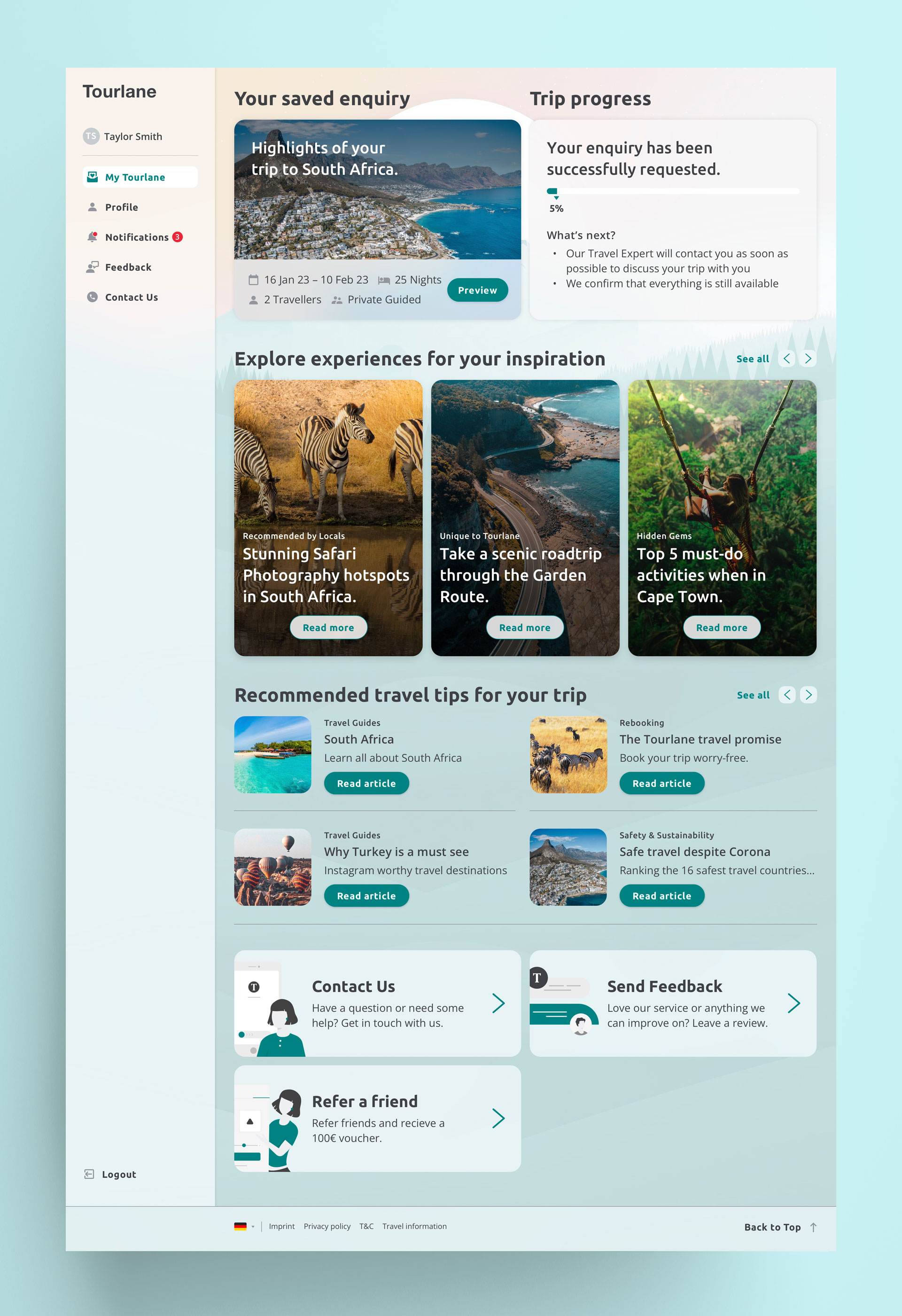
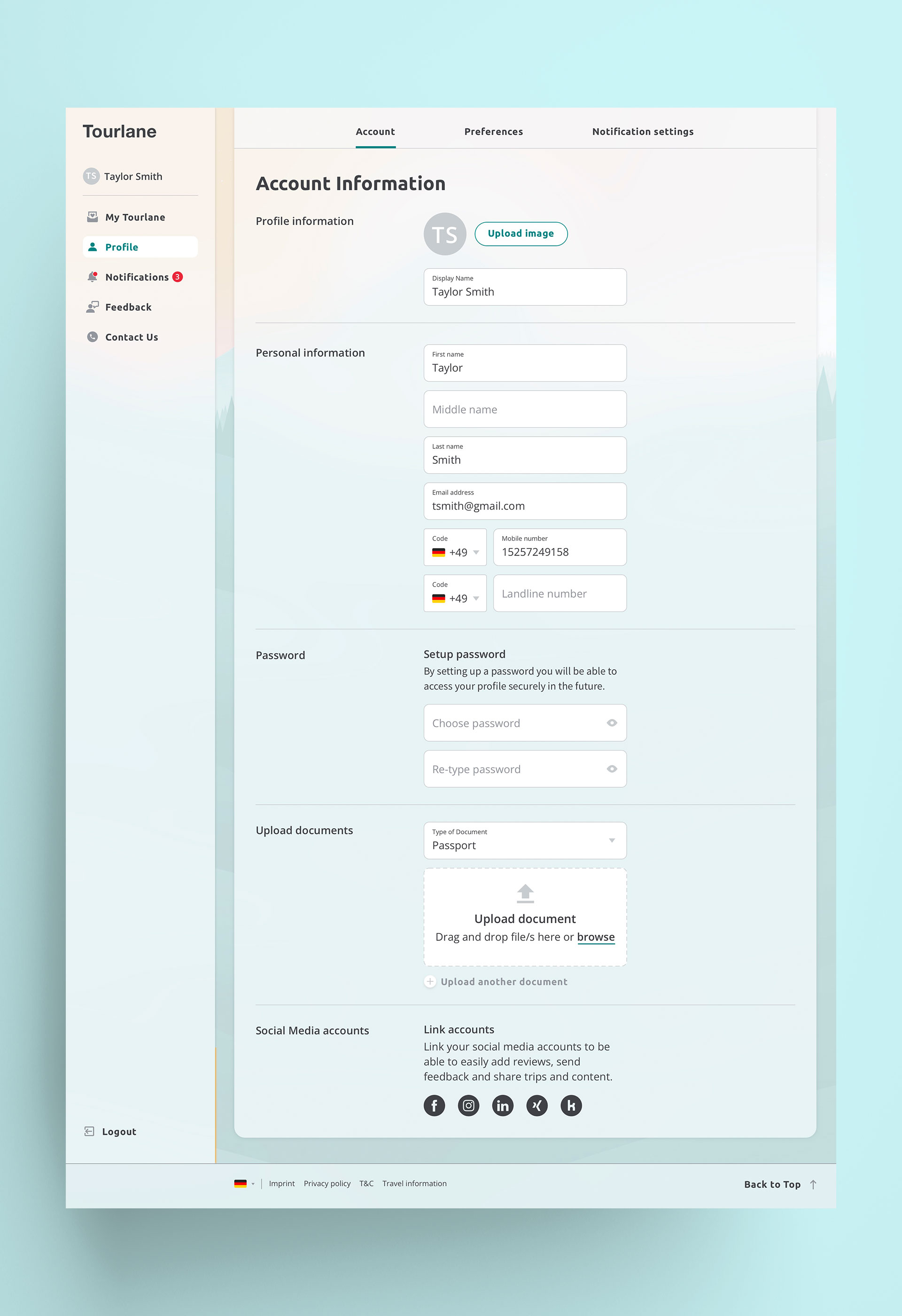
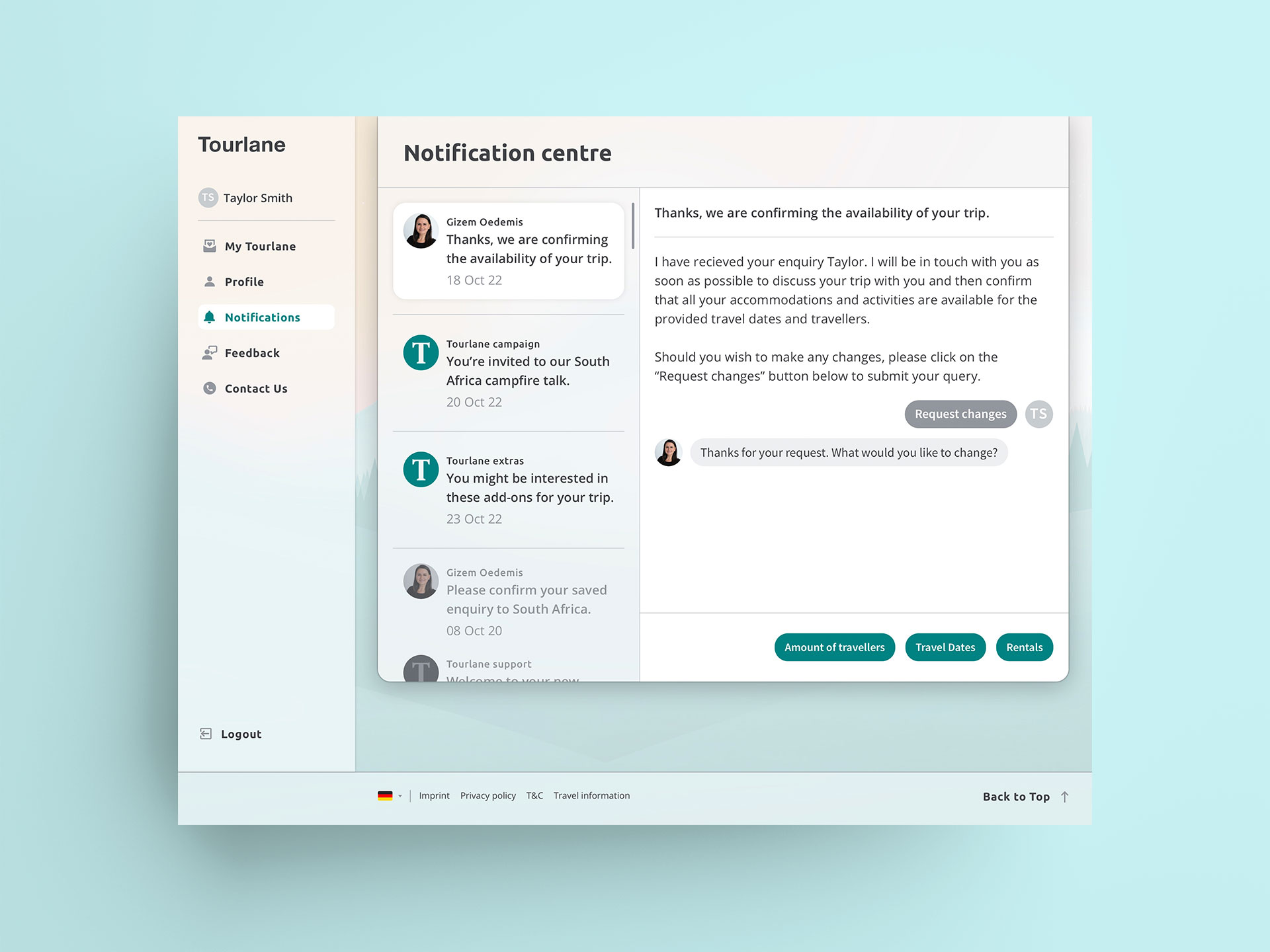
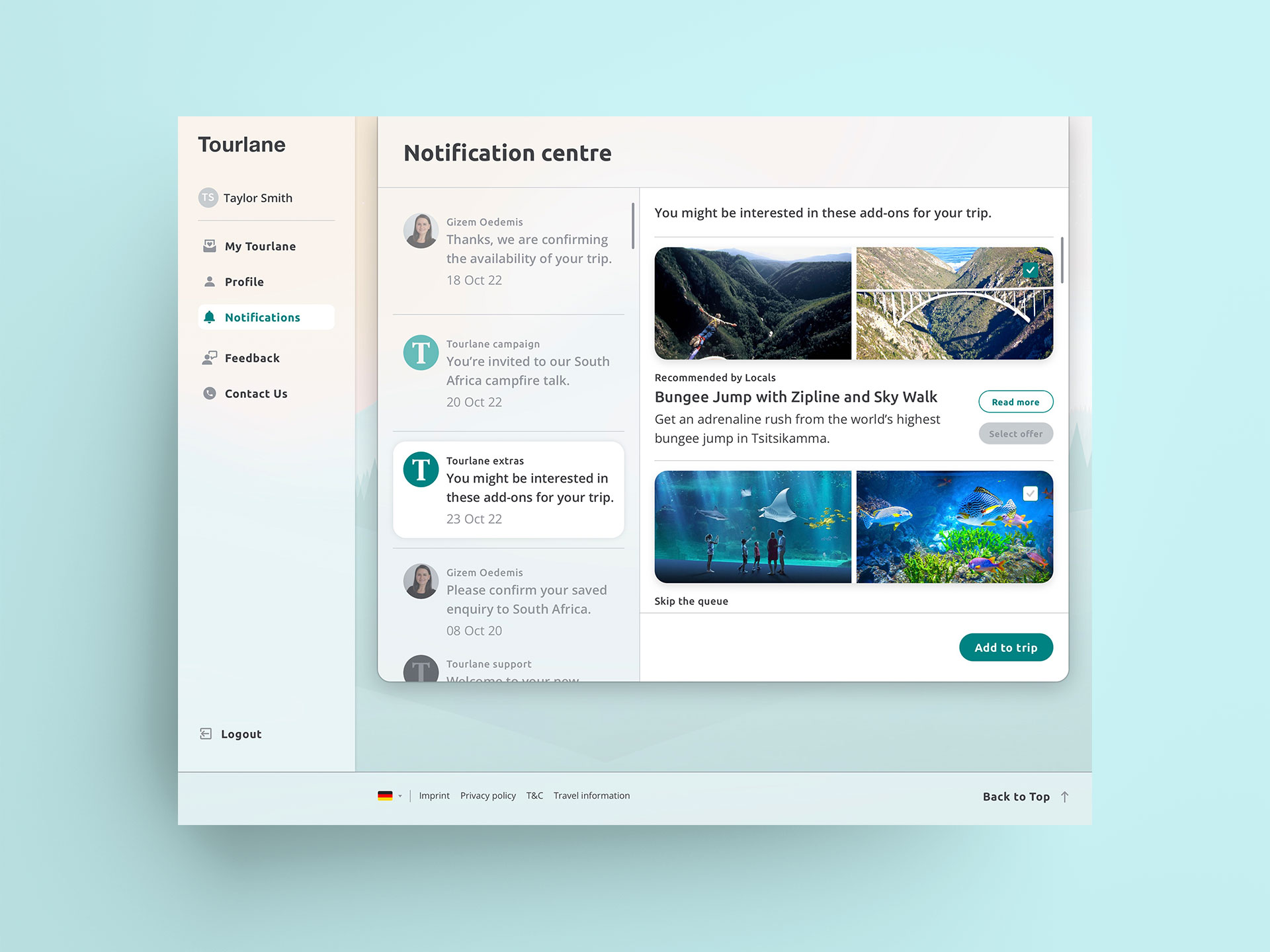
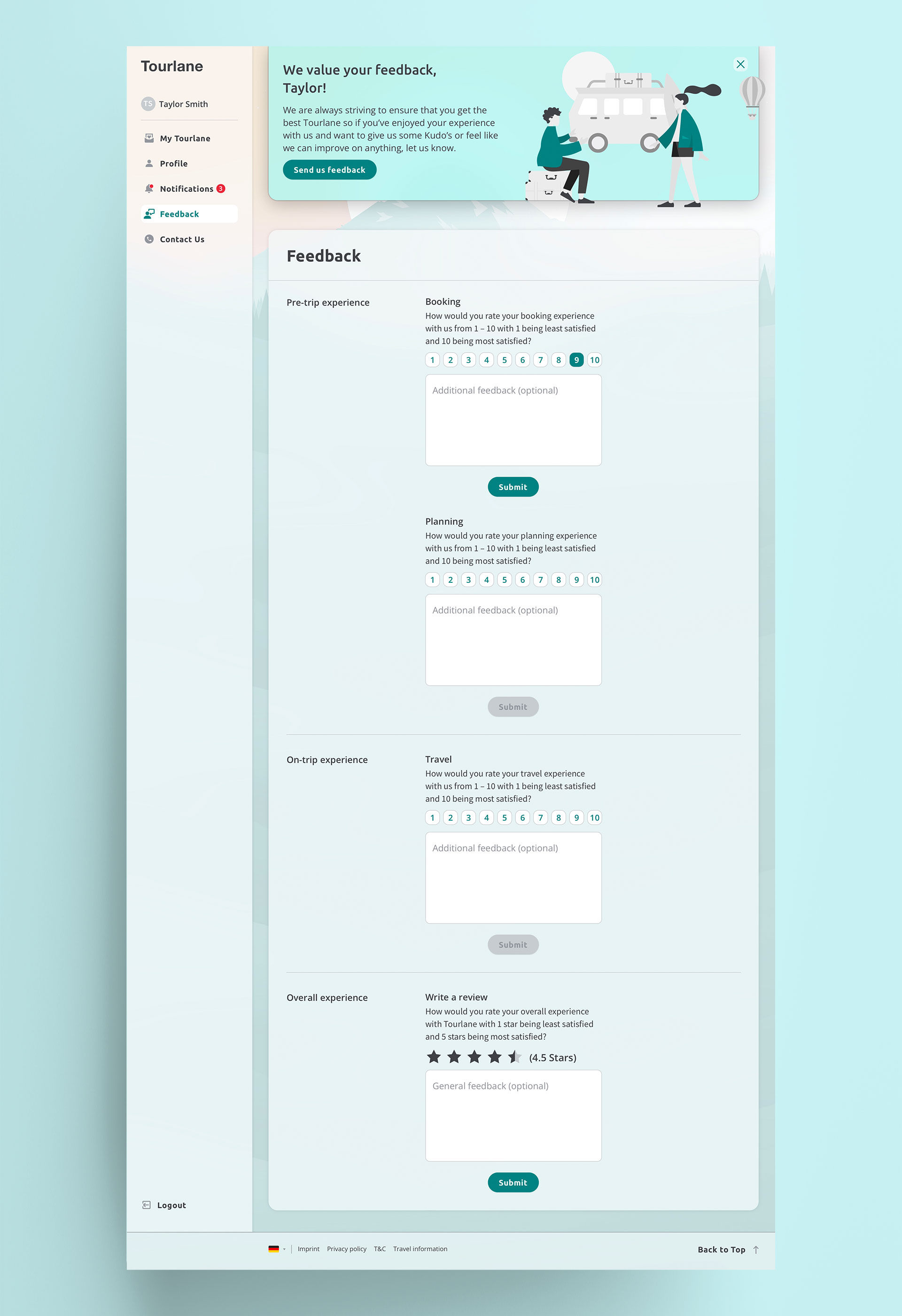
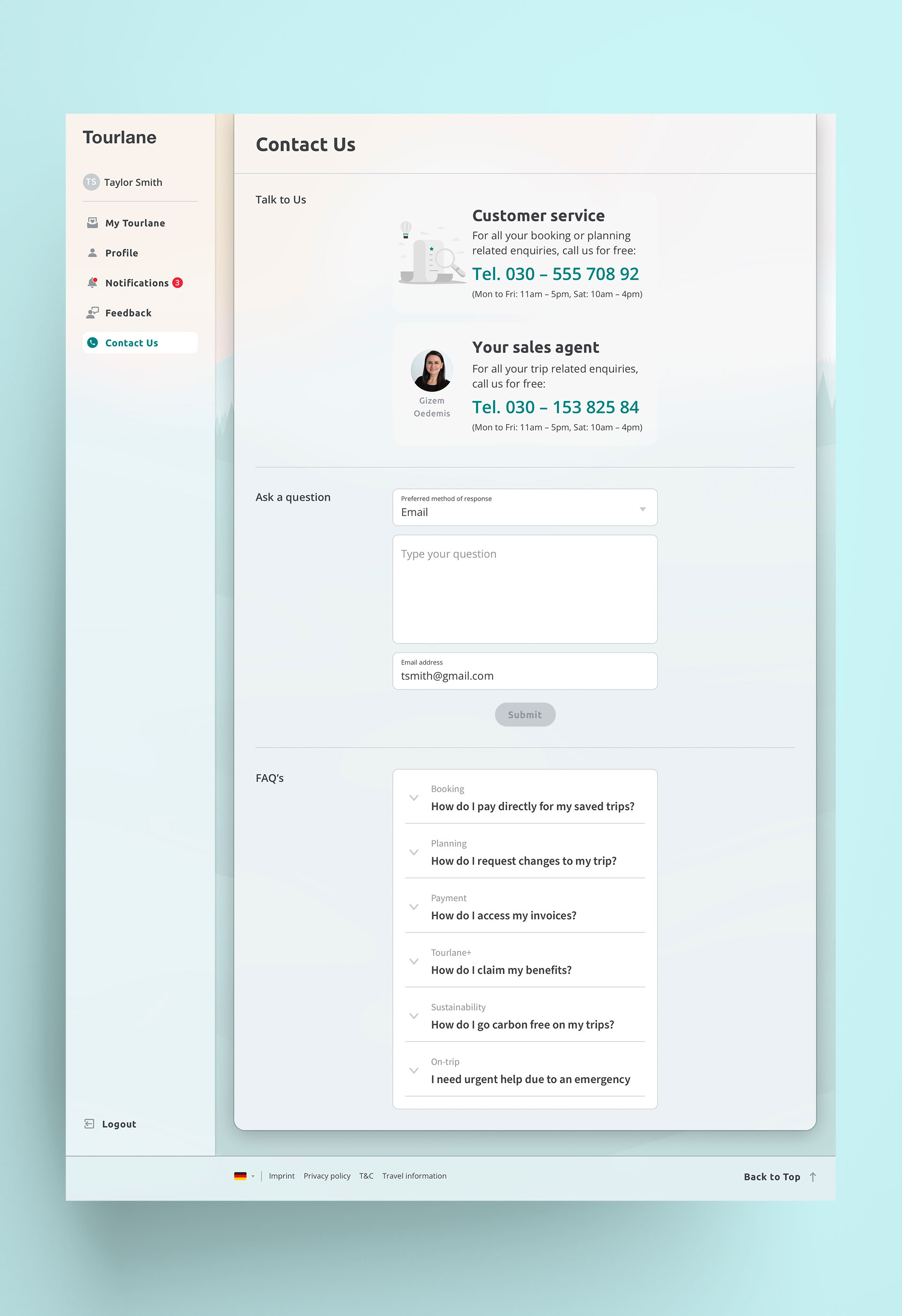
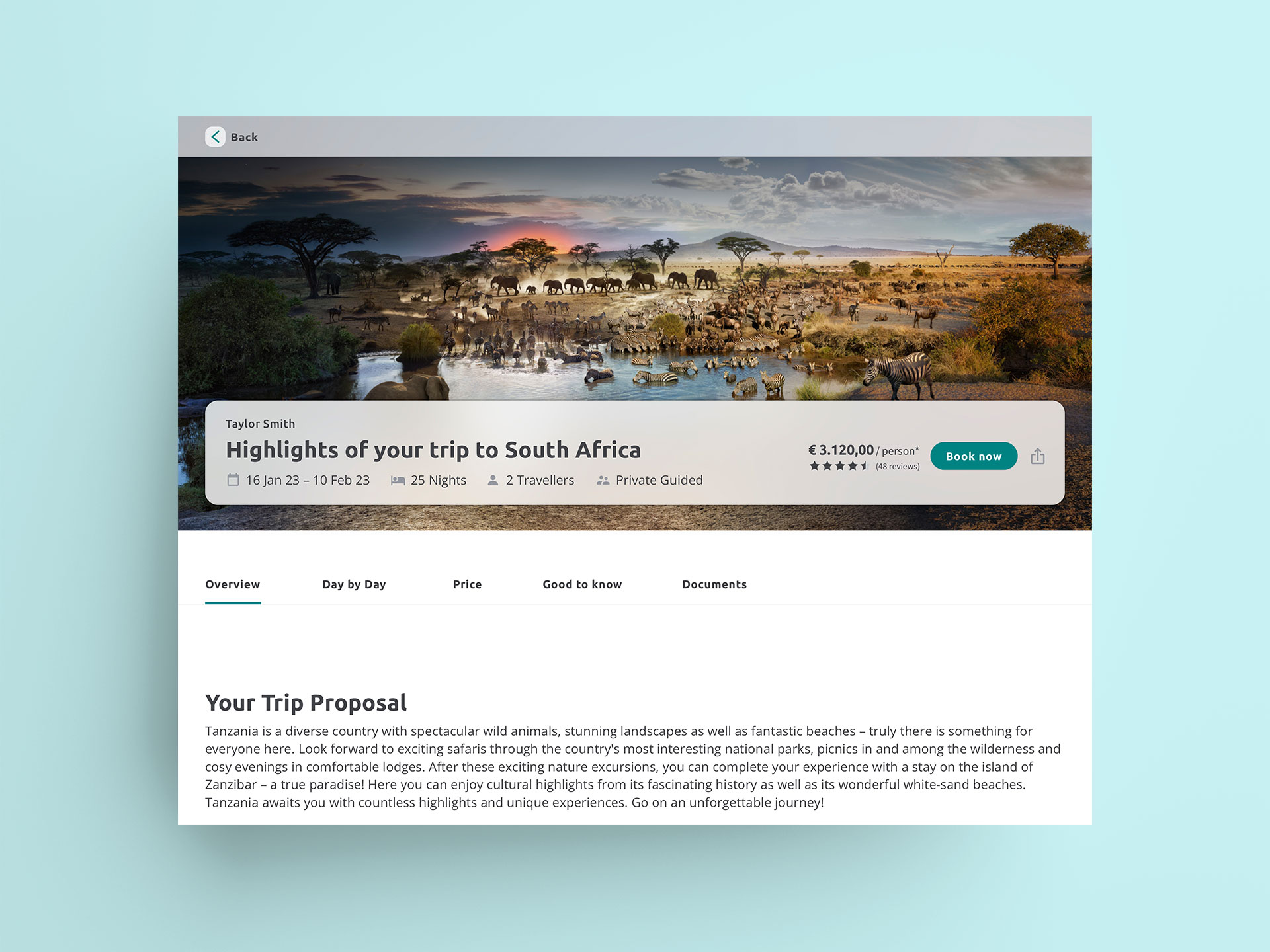
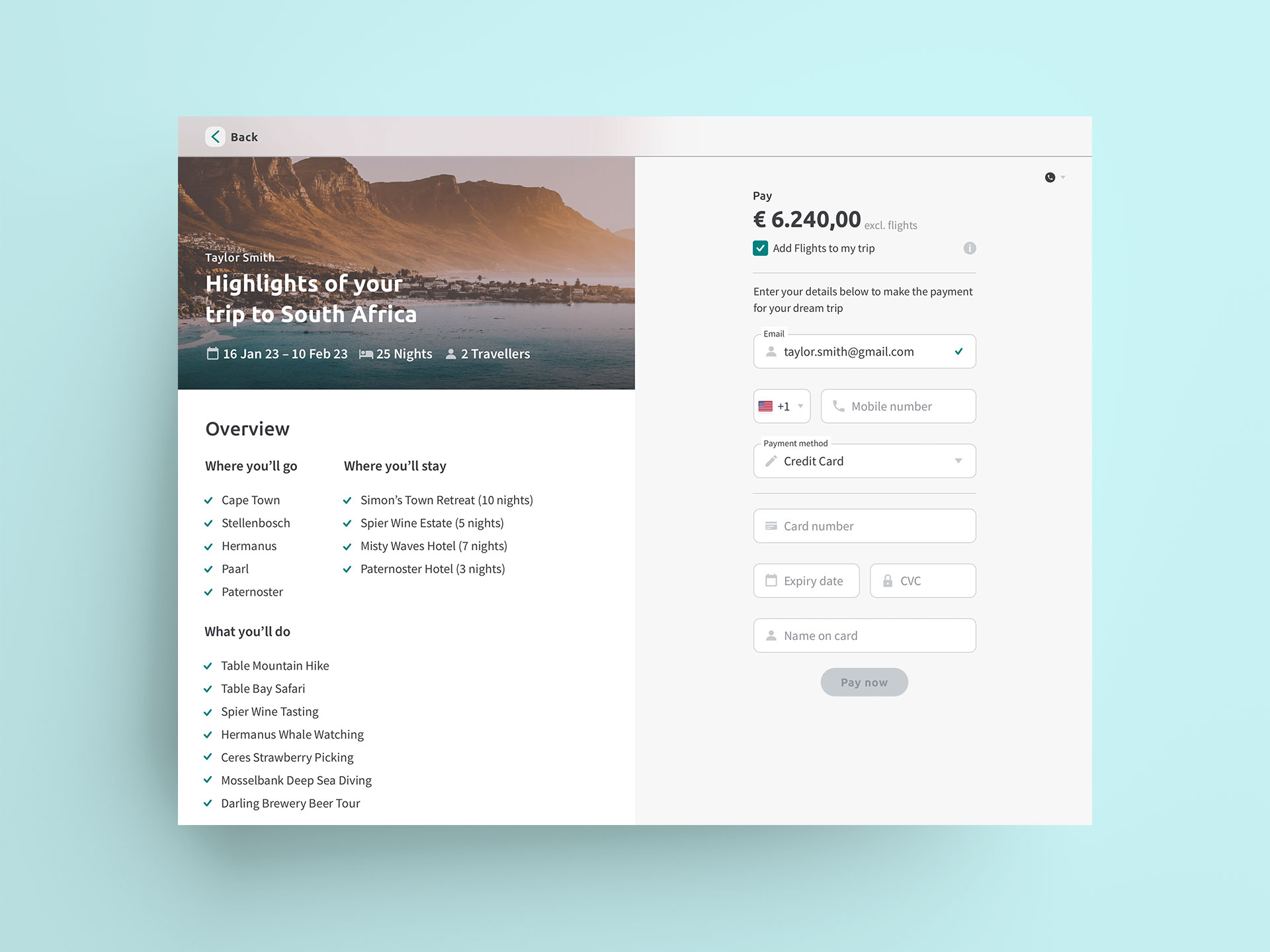

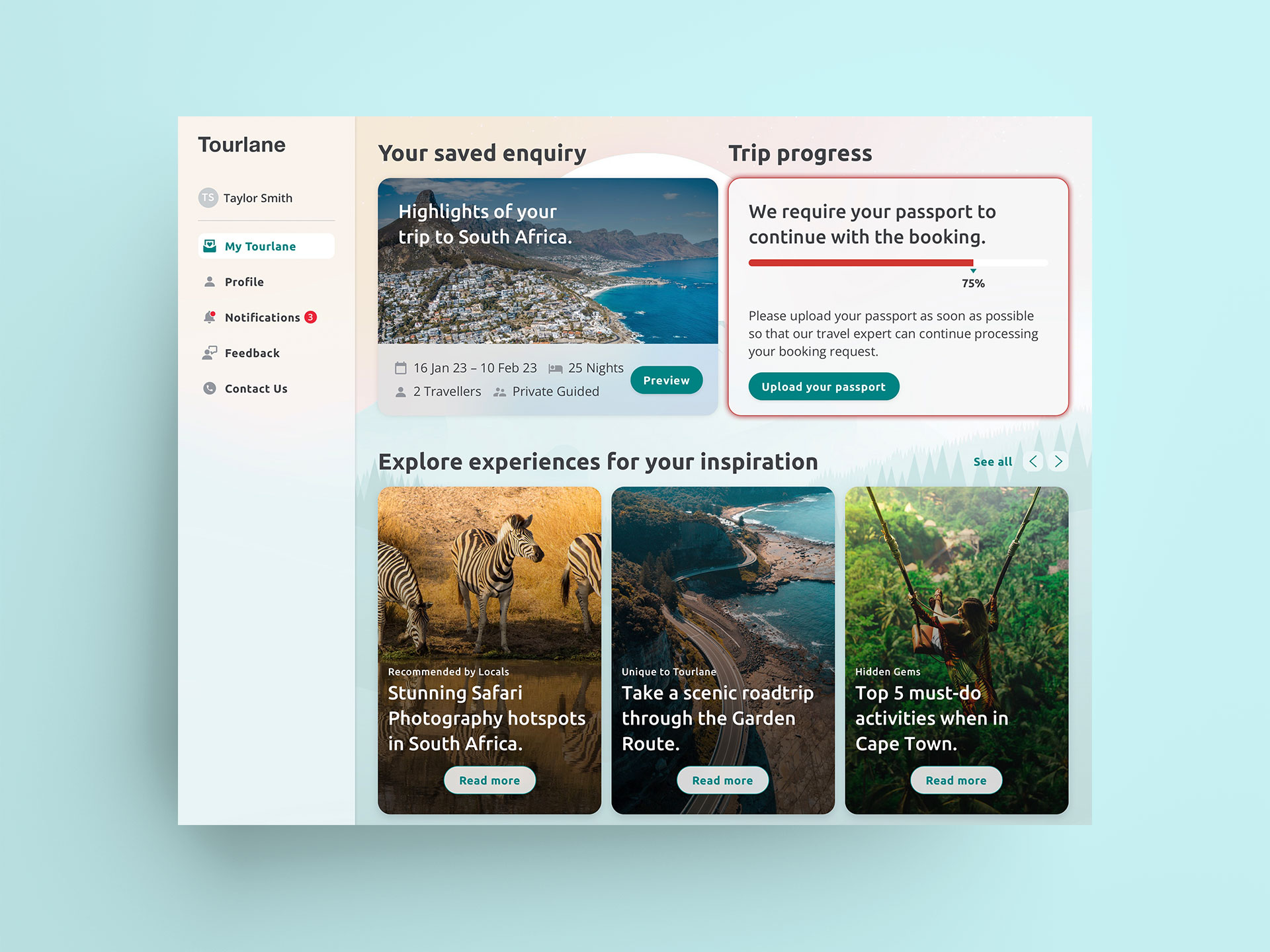
04
Prototype Testing
Objective
Using the designs created in the ideation phase, I created a prototype to test the solution with a diverse group of customers and sales agents. The prototype was tested for usability, accessibility, and overall user experience to ensure that the design meets both the customers and sales agents needs and expectations. I had to iterate on the design solution based on feedback to include additional features and improvements on the usability.
Additional features
During the protype testing, two additional features were requested from a sales agent and customer perspective:
- Adding a service offered by Tourlane called "Tourlane Plus" was requested by customers. The feature provides returning customers with benefits ranging from discounts, vouchers, priority passes to events offered by Tourlane based on a tier system. This would allow customers the opportunity to use their benefits on their current trip. This also allows the marketing team to increase customer engagement by offering more events to customers.
- Sales agents requested adding a booking confirmation feature on the itinerary prior to allowing a customer to pay for a trip. This is an important step for the agents as they are legally required to get customers to confirm the final itinerary before they can move onto the booking and payment process. This includes confirming shipping and billing addresses as well as agreeing to Tourlane's terms and conditions and double opt-in for newsletters. To make this process easier for customers in future, I included shipping and billing address fields in the profile section so that all the information in the confirmation process can be pre-filled with the ability to change the inputs.
Improvements
During the protype testing, two additional usability improvements were requested from a customer perspective:
- Since this is a new feature and customers are not used to the new dashboard, they requested a introduction screen prior to showing the dashboard. After a customer goes through the enquiry funnel and adds their basic details, I added a modal to let customers know what to expect next.
- Some customers also wanted an explantion on how to use the dashboard and all the different features. I included an onboarding experience that allows customers to through the various features which are explained in detail on what to expect from it.
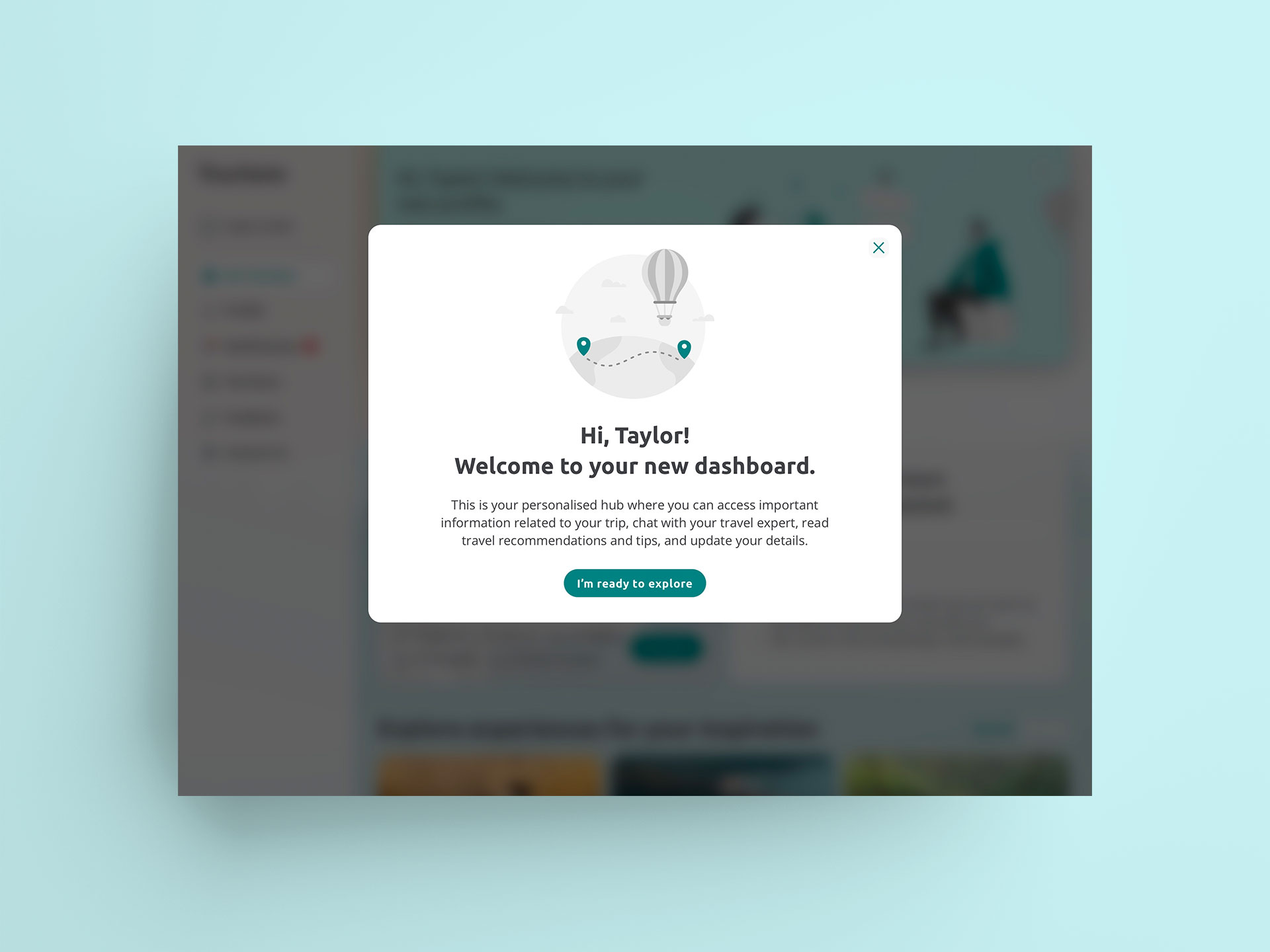
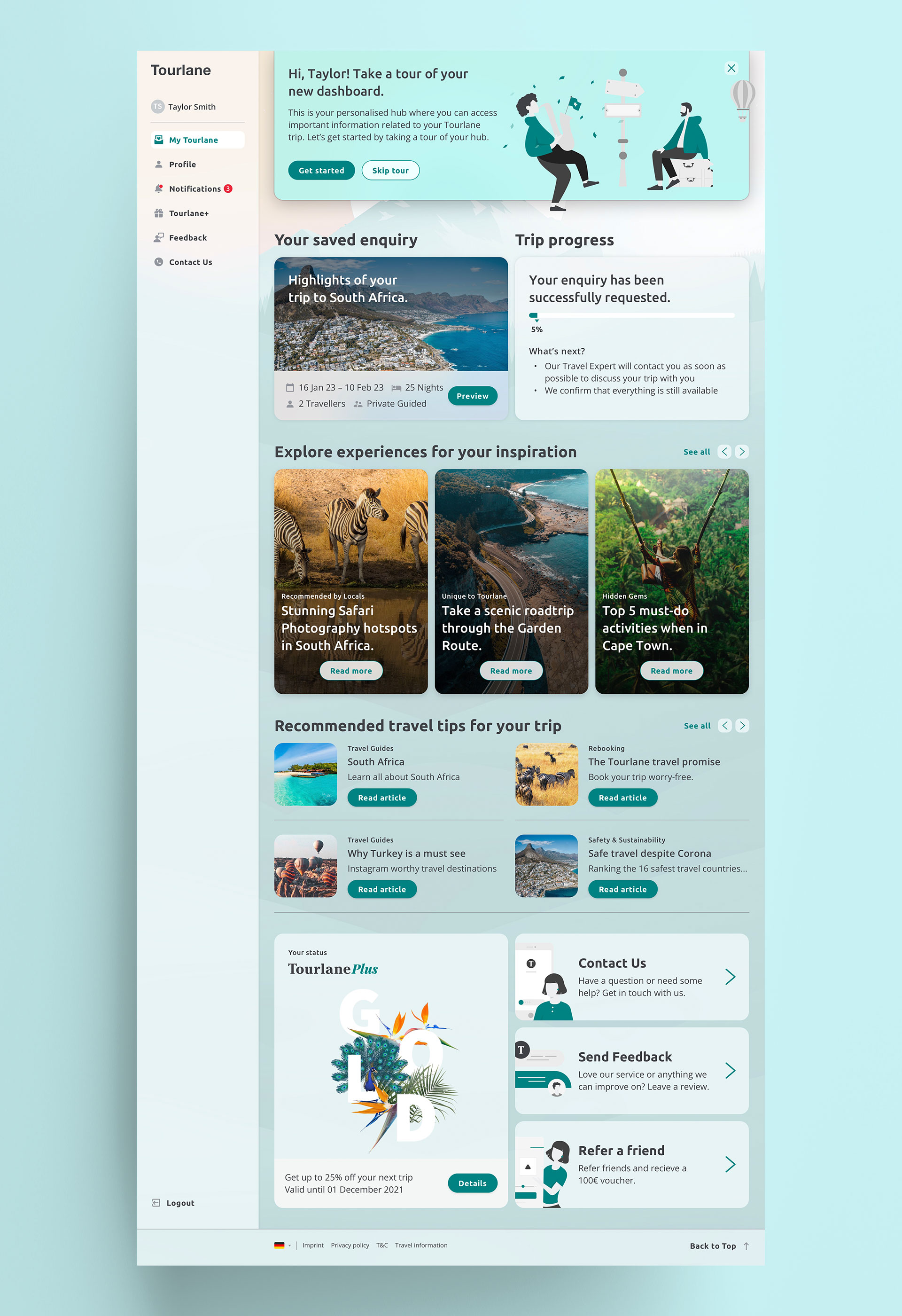
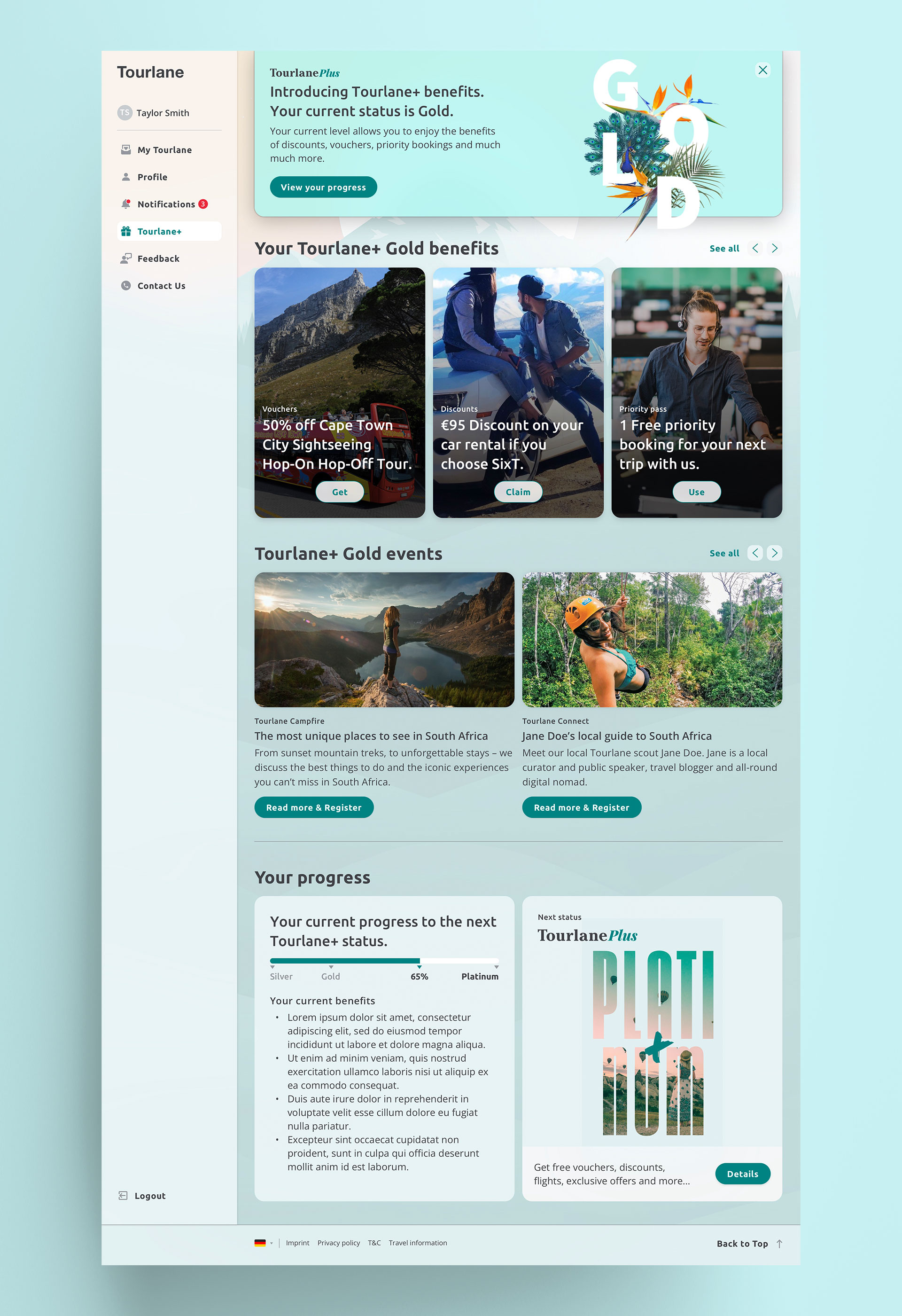

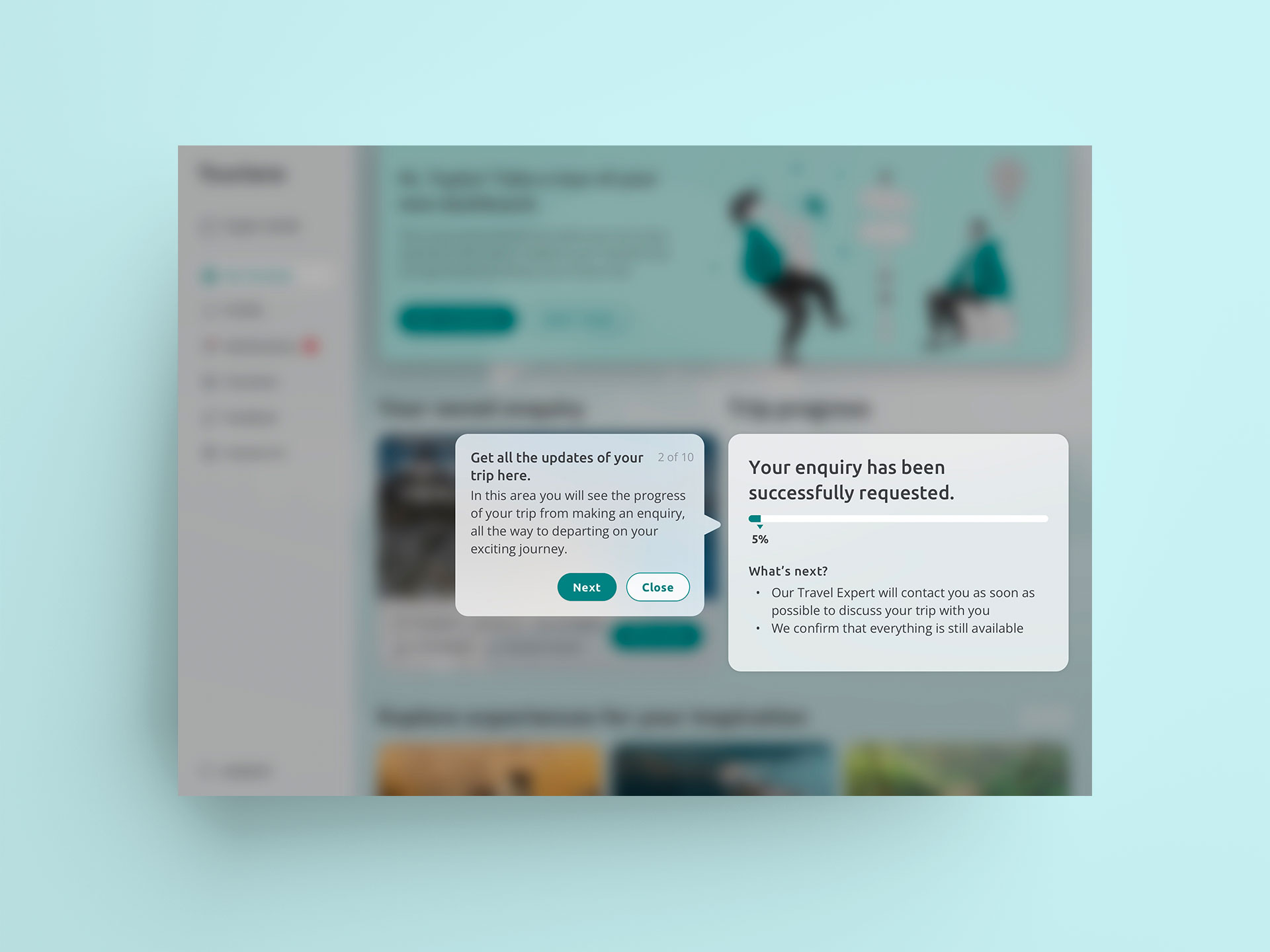
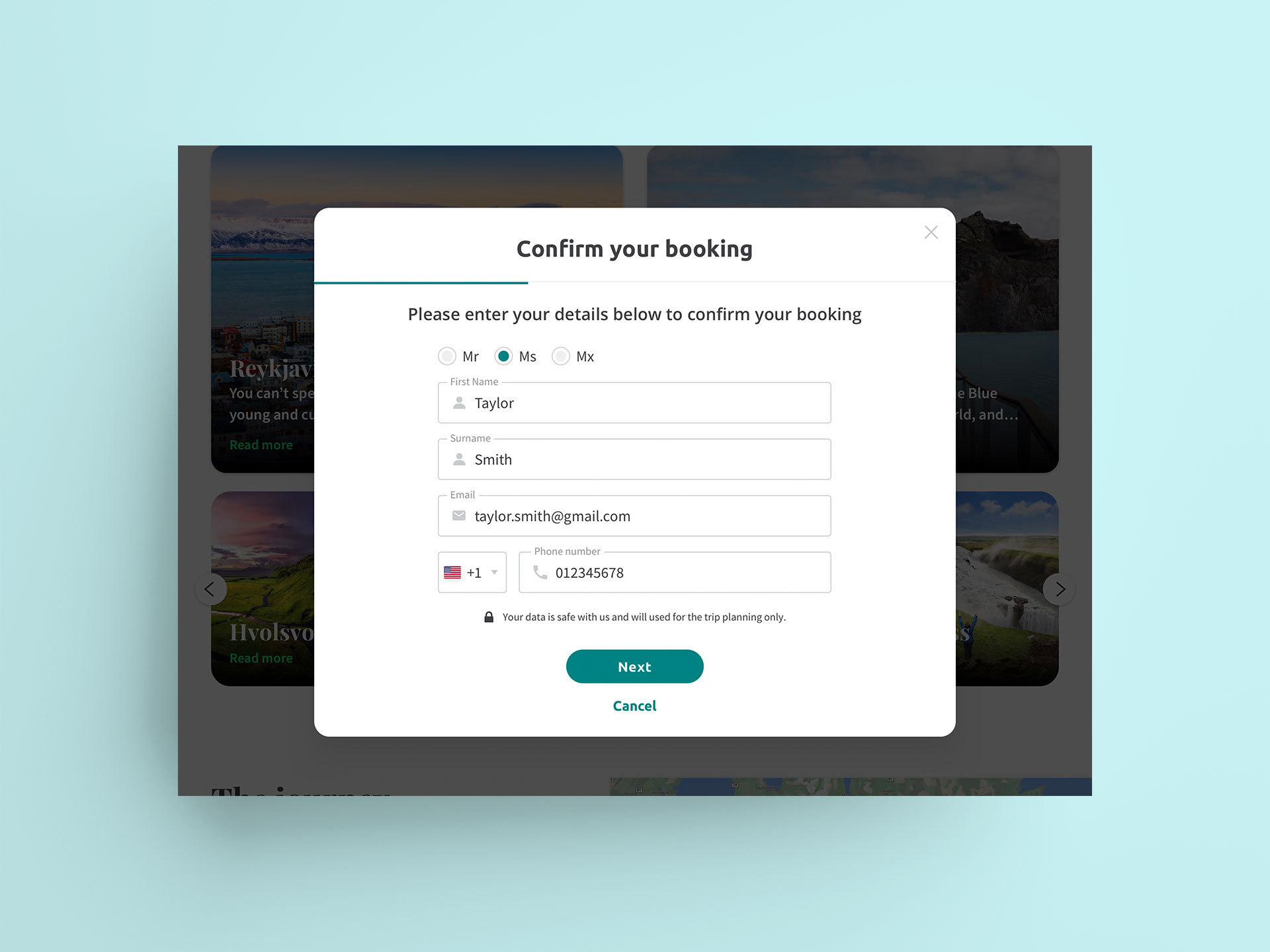
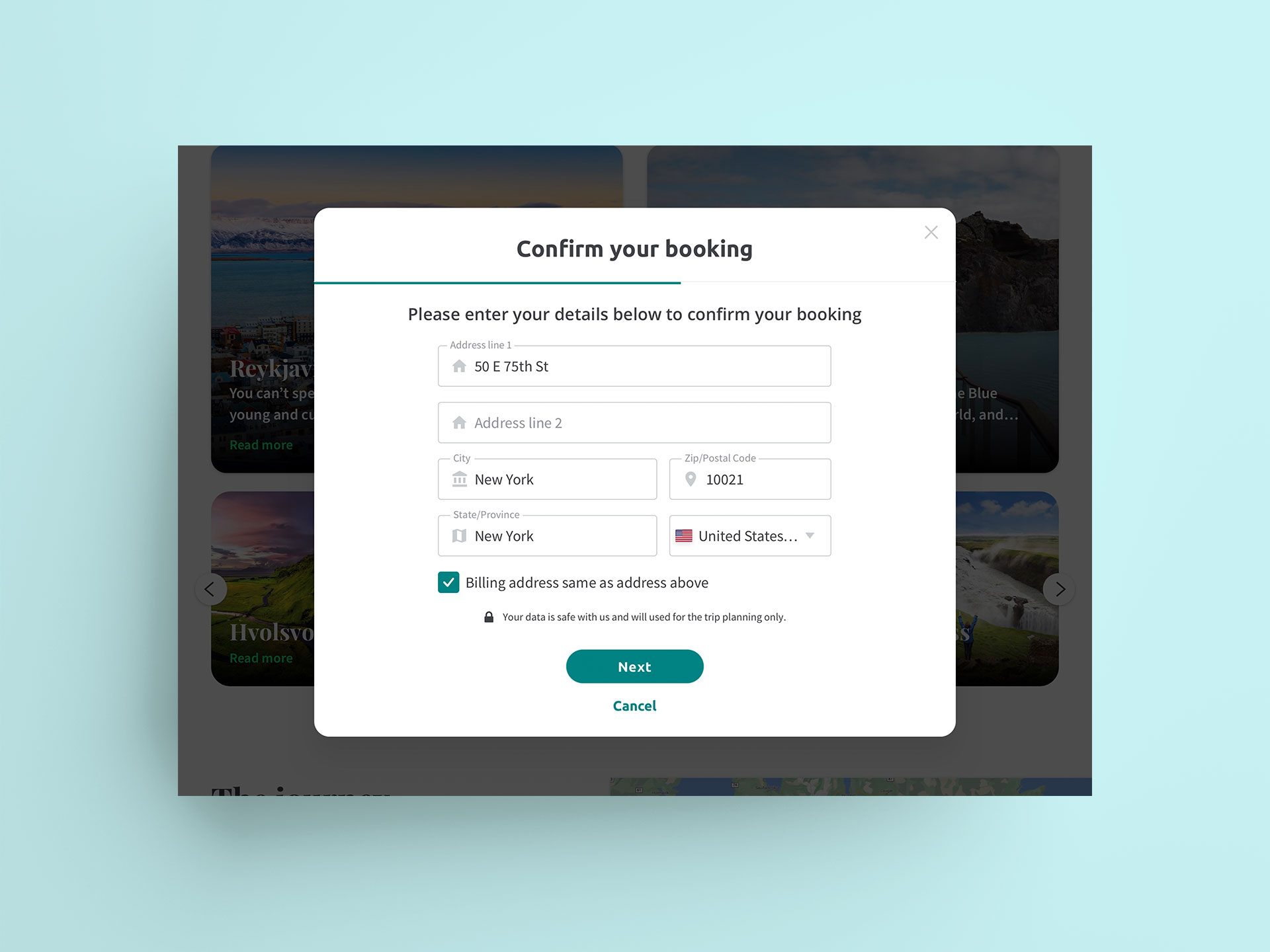
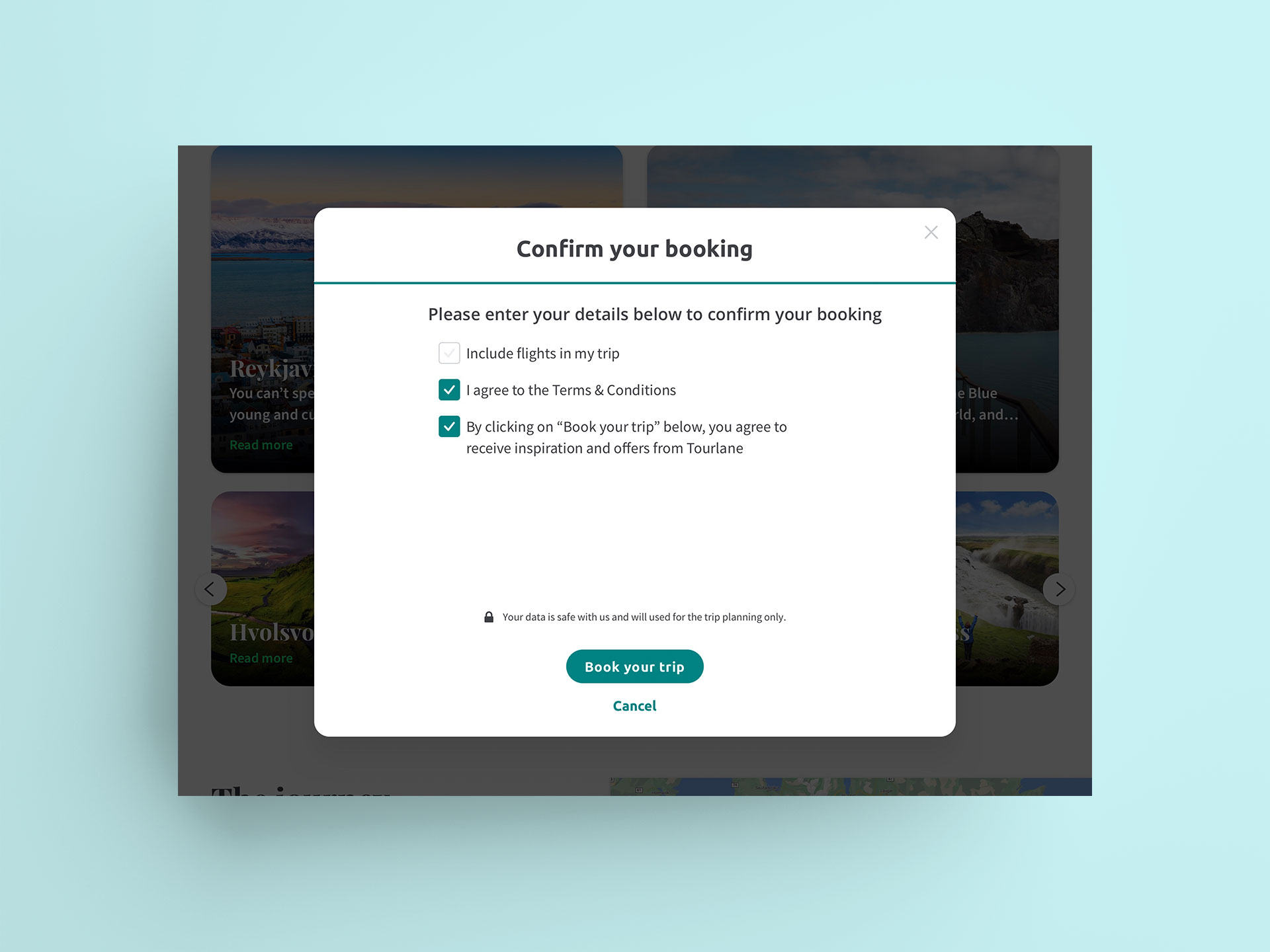
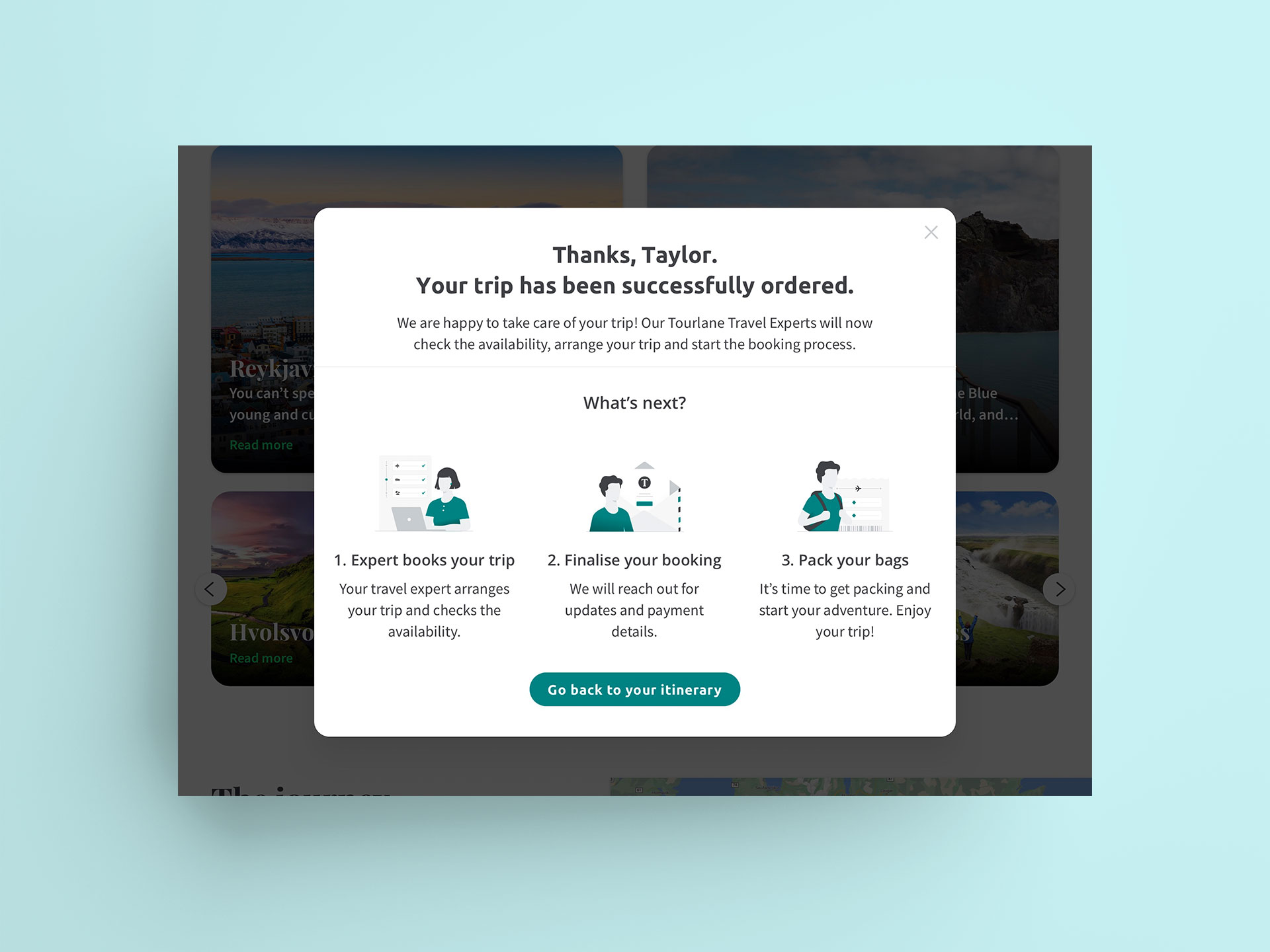
05
OKR's & KPI's
The following OKR's and KPI's were set for the project together with the product lead:
Objective
Improve customer satisfaction and engagement with the traveller dashboard.
Key Results
- Increase the number of customers who complete their trip bookings using the traveller dashboard by 40%.
- Increase the number of customers who use the messaging feature to communicate with the sales agent by 25%.
- Decrease the number of customers who cancel their bookings by 10%.
- Increase the number of customers who leave reviews and/or feeback using the traveller dashboard by 15%.
- Increase the number of customers who claim benefits of "Tourlane Plus" using the traveller dashboard by 20%.
- Increase the number of users who view trip recommendations and tips aricles related to their trip destination by 10%.
KPI's
- Conversion Rate: Percentage of customers who complete their trip bookings using the traveller dashboard.
- Engagement Rate: Percentage of customers who use the messaging feature to communicate with the sales agent.
- Cancellation Rate: Percentage of customers who cancel their bookings.
- Review/Feedback Rate: Percentage of customers who leave reviews and/or feedback.
- Benefits Rate: Percentage of customers who claim "Tourlane Plus" benefits on the traveller dashboard.
- Article View Rate: Percentage of users who view articles related to their trip destination.
Objective
Increase revenue from trip bookings.
Key Results
- Decrease the amount of time spent on calls by sales agents by 30%.
- Increase the number of sales agent bookings per month by 15%.
- Increase the number of repeat bookings by 10%.
KPI's
- Call Rate: Percentage of time spent on calls by sales agents.
- Booking Rate: Percentage of sales agent bookings per month.
- Repeat Booking Rate: Percentage of users who book a second trip using the traveller dashboard.
06
Conclusion
By following a design thinking approach, I was able to design a traveller dashboard that addresses Tourlane's needs while also considering the user's needs and desires when it comes to communication and modernising the approach to communication effectively. The plan was to continuously test and improve the design based on customer feedback and track the performance of the traveller dashboard using OKR's and KPI's to measure its success.
Learning’s and takeaways
The project itself landed up growing quite large in terms of customers and sales agents pain points, needs, goals and motivations. In terms of scope, what was initially set up as improving communication via messaging quickly turned into a fully fledged traveller dashboard. During the ideation and testing phase, I was constantly updating the product lead and engineering team on design iterations and additional features to understand the technical constraints and potential roadblocks along the way which were as follows:
- Integration with existing systems: Tourlane would need to integrate the new traveller dashboard with its existing systems for managing trip bookings and inventory. This can be challenging as the systems have different data structures and the integration requires custom development.
- Technical constraints: The traveller dashboard required complex technical solutions, such as real-time inventory tracking and secure payment processing. These solutions required third-party integrations, which added complexity to the project.
- Customer data privacy safety: The traveller dashboard will store user data, including personal information and trip details. Due to no password setup requirement being mandatory from the first launch of the dashboard, Tourlane could run into potential data leaks which added legal and technical complexity to the project.
Due to the constraints and roadblocks, the project had to be split into several milestones starting with introducing key features and adding more features per milestone. However these concerns were raised with all the stakeholders and expectation management was put in place so that everyone knew what was in scope and what was out of scope per milestone during the approval process.
The project was handed over to another designer to roll out the flows, breakpoints and any additional designs according to the brand.

